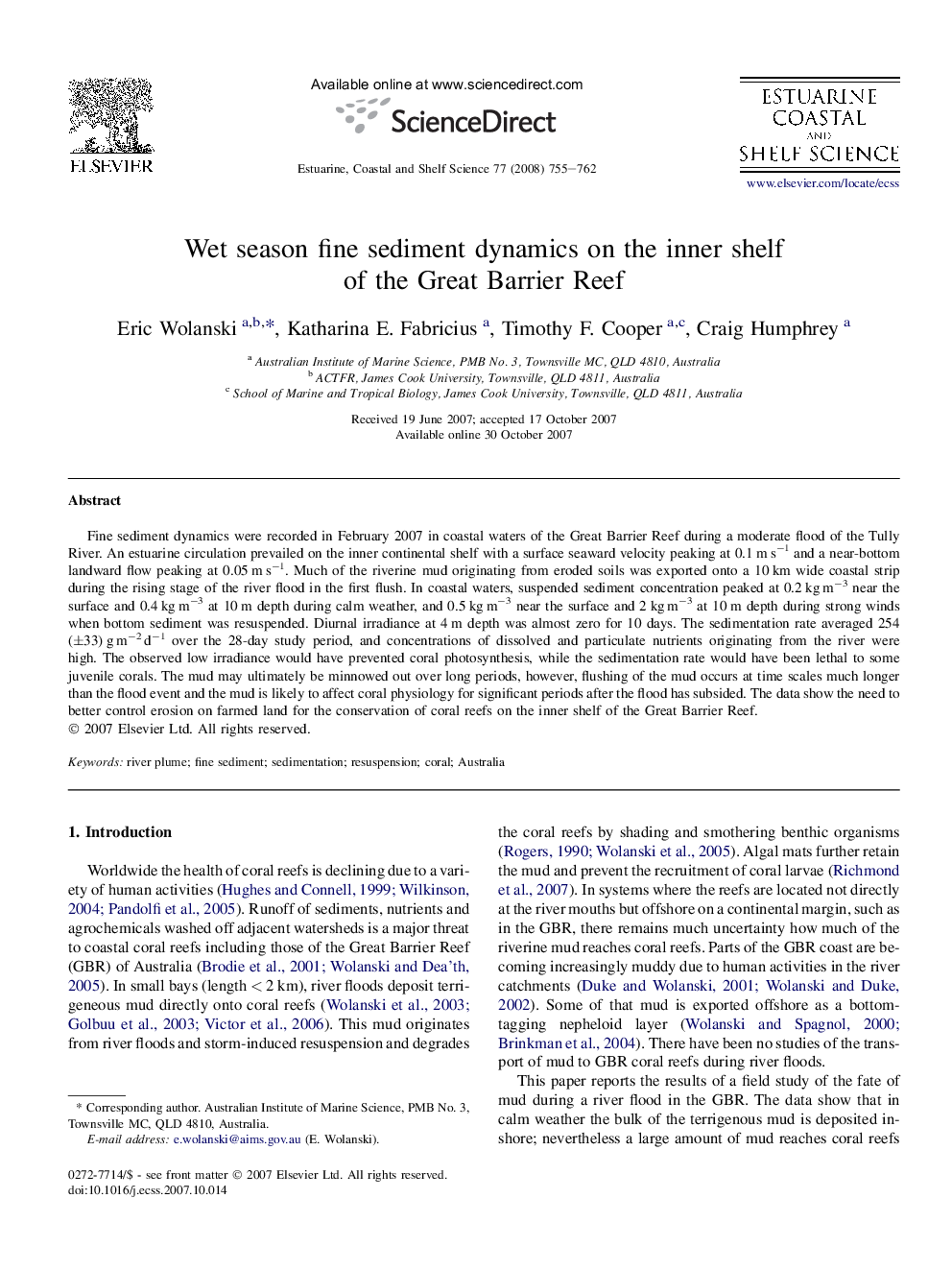| Article ID | Journal | Published Year | Pages | File Type |
|---|---|---|---|---|
| 4541533 | Estuarine, Coastal and Shelf Science | 2008 | 8 Pages |
Fine sediment dynamics were recorded in February 2007 in coastal waters of the Great Barrier Reef during a moderate flood of the Tully River. An estuarine circulation prevailed on the inner continental shelf with a surface seaward velocity peaking at 0.1 m s−1 and a near-bottom landward flow peaking at 0.05 m s−1. Much of the riverine mud originating from eroded soils was exported onto a 10 km wide coastal strip during the rising stage of the river flood in the first flush. In coastal waters, suspended sediment concentration peaked at 0.2 kg m−3 near the surface and 0.4 kg m−3 at 10 m depth during calm weather, and 0.5 kg m−3 near the surface and 2 kg m−3 at 10 m depth during strong winds when bottom sediment was resuspended. Diurnal irradiance at 4 m depth was almost zero for 10 days. The sedimentation rate averaged 254 (±33) g m−2 d−1 over the 28-day study period, and concentrations of dissolved and particulate nutrients originating from the river were high. The observed low irradiance would have prevented coral photosynthesis, while the sedimentation rate would have been lethal to some juvenile corals. The mud may ultimately be minnowed out over long periods, however, flushing of the mud occurs at time scales much longer than the flood event and the mud is likely to affect coral physiology for significant periods after the flood has subsided. The data show the need to better control erosion on farmed land for the conservation of coral reefs on the inner shelf of the Great Barrier Reef.
